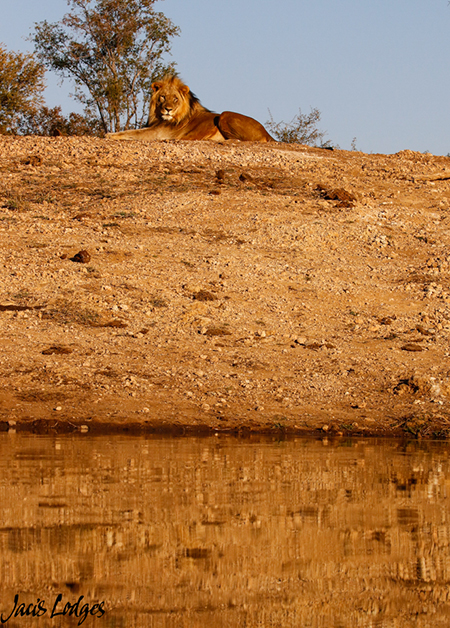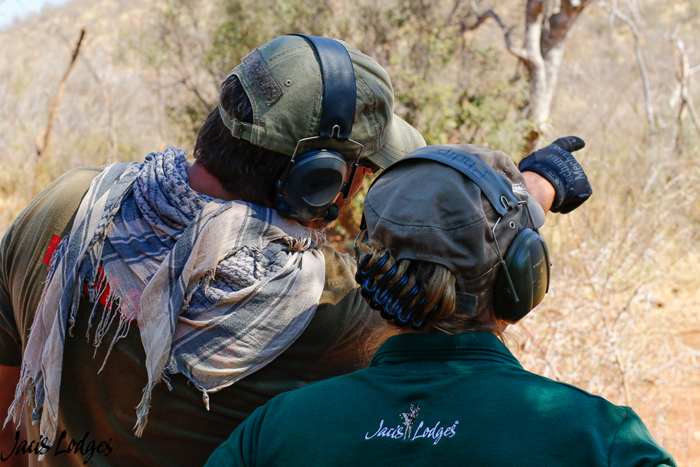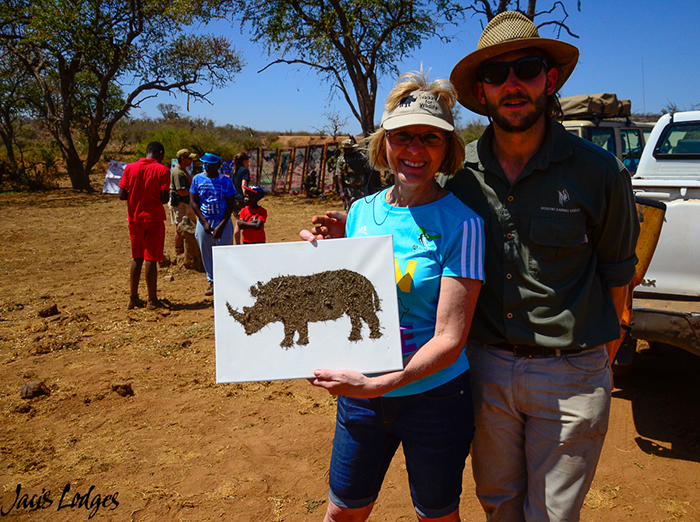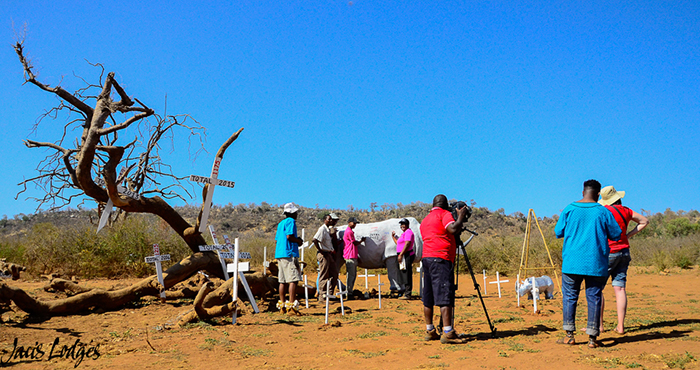I’ve worked as the photographic guide at Jaci's lodges in Madikwe since the beginning of the year and just like with any type of guiding, there are plenty of opportunities to learn something new every day. That’s an aspect that keeps me hooked to the guiding profession; you can challenge yourself on a daily basis, with every new guest. The interaction can be a great learning experience for both yourself and the guests.


A photographic drive is an opportunity for guests to learn more about photography in general and specifically wildlife photography. Every morning and afternoon there’s a possibility for a maximum of four guests to go on a photographic drive, on a first come first served basis. The maximum of number of four guests is to make sure that the learning experience is optimal. They can borrow cameras with 100-400 mm lenses, equipped with a memory card, as well as a vehicle mount for the camera, if they so wish.
Before heading out, the guests are given a few minutes of easy-to-follow instructions about the equipment, with the cameras set to aperture priority. To not overwhelm beginners, starting to take photos and learning as you go has proven to be the most inspiring method. I keep my camera at the same settings that I advise my guests to use, as to easily be able to show them what we’re aiming for, as well as being able to advise on how to adjust their settings to achieve the desired results.

We normally start out taking it slow, in hope of finding anything worth capturing on camera, be it a beautiful tree, a leopard or anything in between. As the different opportunities present themselves, we begin with basic composition and trying to get the animal in focus. Depending on the guests experience and knowledge, we then progress via playing around with different apertures, iso settings and exposure compensation to dealing with animals in motion, low light and other specific situations that may arise. Some guests want to learn more about certain aspects of photography, like macro or panning, which we then also will be giving a go. Important to keep in mind is of course the anticipation of animal behaviour, and this is where you as a field guide may have a lot to offer even the more experienced photographers.
On this type of drive and with the lenses we supply, it’s important to remember to not stop too close to the animals to begin with. A slow approach is preferable so as to get the whole animal in the frame, before advancing closer, if the animals allow for it. Sometimes dense bush and other aspects make this difficult, but then it is important to remember that close -ups and details can be interesting subjects as well.
Before heading out, the guests are given a few minutes of easy-to-follow instructions about the equipment, with the cameras set to aperture priority. To not overwhelm beginners, starting to take photos and learning as you go has proven to be the most inspiring method. I keep my camera at the same settings that I advise my guests to use, as to easily be able to show them what we’re aiming for, as well as being able to advise on how to adjust their settings to achieve the desired results.

We normally start out taking it slow, in hope of finding anything worth capturing on camera, be it a beautiful tree, a leopard or anything in between. As the different opportunities present themselves, we begin with basic composition and trying to get the animal in focus. Depending on the guests experience and knowledge, we then progress via playing around with different apertures, iso settings and exposure compensation to dealing with animals in motion, low light and other specific situations that may arise. Some guests want to learn more about certain aspects of photography, like macro or panning, which we then also will be giving a go. Important to keep in mind is of course the anticipation of animal behaviour, and this is where you as a field guide may have a lot to offer even the more experienced photographers.
On this type of drive and with the lenses we supply, it’s important to remember to not stop too close to the animals to begin with. A slow approach is preferable so as to get the whole animal in the frame, before advancing closer, if the animals allow for it. Sometimes dense bush and other aspects make this difficult, but then it is important to remember that close -ups and details can be interesting subjects as well.

A close-up of the pattern of a giraffe, or a lion glaring at you can make for a great shot, even if most of the animal is obscured, as long as the eye is in focus. Here it’s important to use only one focal point, if you’re still on automatic focus.
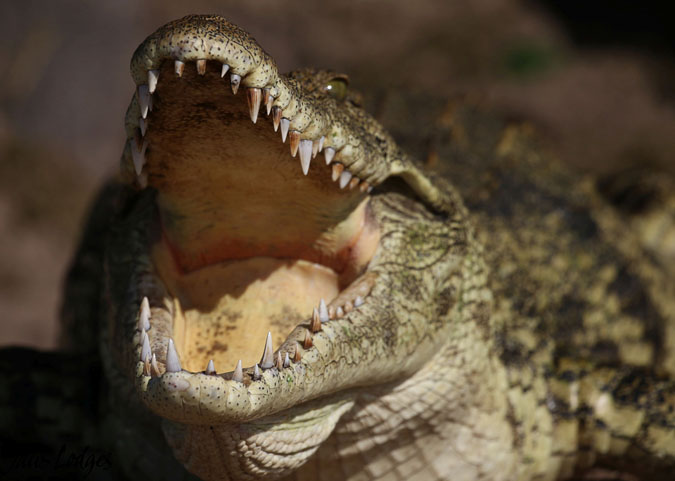

The Facebook updates and safari slide shows normally become less of an ordeal for your loved ones, if there’s some variance in the type of photos you take. The variety of photos you can achieve in just one sighting often amazes the guests, as there’s a common notion that you can’t take pictures from certain angles or in certain light. A simple thing like zooming in and out, changing your position or angle, or waiting for the animal to do so can be very rewarding. If you’re patient and happy to experiment you’ll see that one animal in one location can be an absolute treasure.
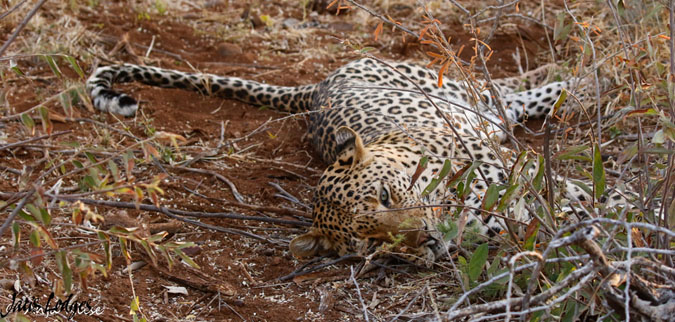
Some guests want to photograph specific animals, like wild dogs or lions. Having only a few guests on the vehicle makes it easier to try to accommodate these requests. But, the photo drives are normally not about having the largest animals to photograph or a thrilling hunt to capture… though that’s obviously something you hope for on every drive! Nature of course doesn’t play on cue, regardless of what sort of drive you’re doing. I always find it more satisfying to accomplish an unusual or interesting picture of an ordinary animal, than an ordinary picture of an unusual species. However, that doesn’t mean I don’t get super excited when coming across an aardvark, wild cat or leopard, regardless of light, angle and obstructions. There will be lots of photos taken anyway; trust me. Results may vary and some photos probably satisfy the field guide in me, rather than the photographic guide.
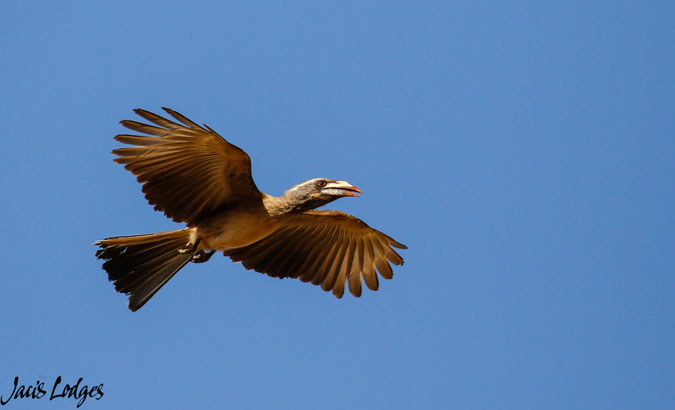
Many guests have never had the opportunity to properly take pictures of birds, as it requires a rather big lens, or for the birds to be really close… preferably both. Most think they aren’t even interested in the avian species, but can then get very focused and competitive once they get on to it. Not long ago I spent about forty minutes photographing grey hornbills in flight, with a family of four who claimed to have no interest in birds. They didn’t want to leave the sighting, until we heard lions roaring close by and we went to investigate. Over dinner that evening, the youngest member of the family proudly showed off her mother’s work to everyone… not of the lion, but the birds!
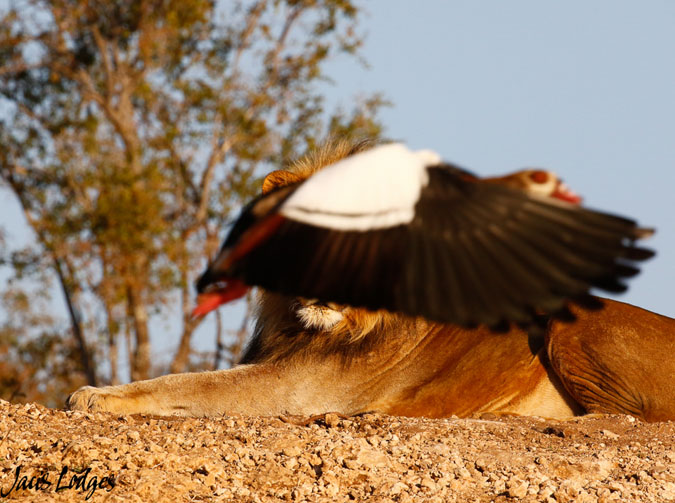
Sometimes you get photos that at first glance look like a mistake, but deleting photos from the camera in the field can many times prove to be a mistake. I have myself had animals all of a sudden walking or flying straight in front of my subject, had my settings all wrong or moved the camera because of a bug hitting your forehead. Some of these shots can actually look intentionally arty or comical. So, if you are happy to get some fun and funky images, as well as your more normal shots, there are many awesome opportunities to be explored.
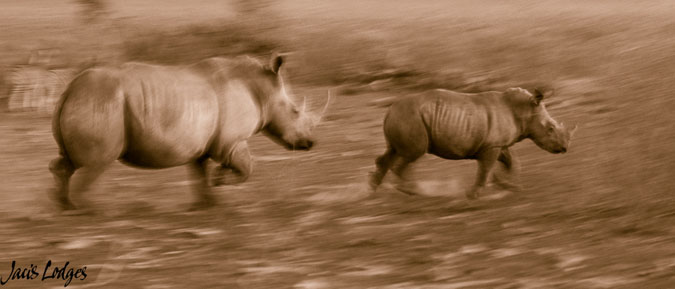 For me, different behavior and interactions is usually what I look for, as it’s what interests me. But to get a really nice result, light is usually the key. If the light is perfect, anything will look beautiful or interesting. The golden hour in the morning and afternoon are the times when you want to be having the greatest sightings, for your guests to get some really good shots to take home as their trophy from the event. Seeing the beautiful results of your own work is usually the best way of inspiring your guests to keep the photography up, even after their stay at the lodge.
For me, different behavior and interactions is usually what I look for, as it’s what interests me. But to get a really nice result, light is usually the key. If the light is perfect, anything will look beautiful or interesting. The golden hour in the morning and afternoon are the times when you want to be having the greatest sightings, for your guests to get some really good shots to take home as their trophy from the event. Seeing the beautiful results of your own work is usually the best way of inspiring your guests to keep the photography up, even after their stay at the lodge.
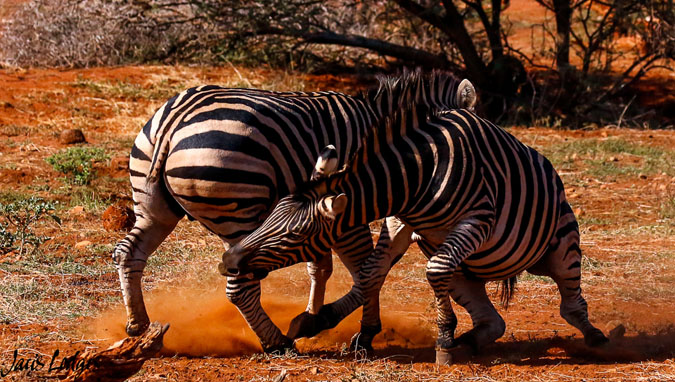
Something I have in common with most of my guests is that I never get tired of sunrises and sunsets, which are difficult to get right, if you aren’t used to your camera. Often the request from photo interested guests is for nice sunrise or sunset spots, with or without animal silhouettes. This is quite easily accommodated, as long as the weather is on your side. We’ve all seen the amazing postcard versions and trying to replicate them for yourself is a challenge, but also very satisfying when it all works out. However, it may also entail everyone getting up at silly hours in the morning!
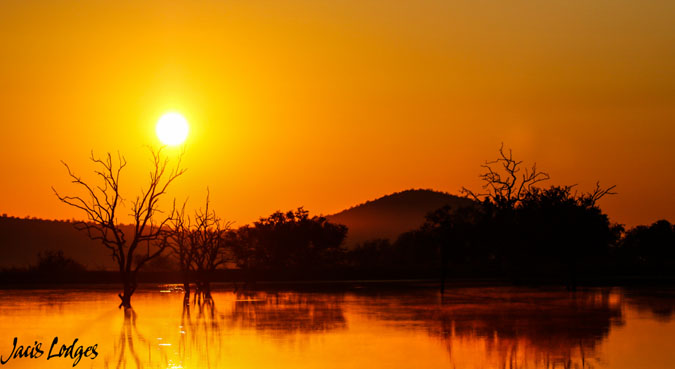


The Facebook updates and safari slide shows normally become less of an ordeal for your loved ones, if there’s some variance in the type of photos you take. The variety of photos you can achieve in just one sighting often amazes the guests, as there’s a common notion that you can’t take pictures from certain angles or in certain light. A simple thing like zooming in and out, changing your position or angle, or waiting for the animal to do so can be very rewarding. If you’re patient and happy to experiment you’ll see that one animal in one location can be an absolute treasure.

Some guests want to photograph specific animals, like wild dogs or lions. Having only a few guests on the vehicle makes it easier to try to accommodate these requests. But, the photo drives are normally not about having the largest animals to photograph or a thrilling hunt to capture… though that’s obviously something you hope for on every drive! Nature of course doesn’t play on cue, regardless of what sort of drive you’re doing. I always find it more satisfying to accomplish an unusual or interesting picture of an ordinary animal, than an ordinary picture of an unusual species. However, that doesn’t mean I don’t get super excited when coming across an aardvark, wild cat or leopard, regardless of light, angle and obstructions. There will be lots of photos taken anyway; trust me. Results may vary and some photos probably satisfy the field guide in me, rather than the photographic guide.

Many guests have never had the opportunity to properly take pictures of birds, as it requires a rather big lens, or for the birds to be really close… preferably both. Most think they aren’t even interested in the avian species, but can then get very focused and competitive once they get on to it. Not long ago I spent about forty minutes photographing grey hornbills in flight, with a family of four who claimed to have no interest in birds. They didn’t want to leave the sighting, until we heard lions roaring close by and we went to investigate. Over dinner that evening, the youngest member of the family proudly showed off her mother’s work to everyone… not of the lion, but the birds!

Sometimes you get photos that at first glance look like a mistake, but deleting photos from the camera in the field can many times prove to be a mistake. I have myself had animals all of a sudden walking or flying straight in front of my subject, had my settings all wrong or moved the camera because of a bug hitting your forehead. Some of these shots can actually look intentionally arty or comical. So, if you are happy to get some fun and funky images, as well as your more normal shots, there are many awesome opportunities to be explored.
 For me, different behavior and interactions is usually what I look for, as it’s what interests me. But to get a really nice result, light is usually the key. If the light is perfect, anything will look beautiful or interesting. The golden hour in the morning and afternoon are the times when you want to be having the greatest sightings, for your guests to get some really good shots to take home as their trophy from the event. Seeing the beautiful results of your own work is usually the best way of inspiring your guests to keep the photography up, even after their stay at the lodge.
For me, different behavior and interactions is usually what I look for, as it’s what interests me. But to get a really nice result, light is usually the key. If the light is perfect, anything will look beautiful or interesting. The golden hour in the morning and afternoon are the times when you want to be having the greatest sightings, for your guests to get some really good shots to take home as their trophy from the event. Seeing the beautiful results of your own work is usually the best way of inspiring your guests to keep the photography up, even after their stay at the lodge.
Something I have in common with most of my guests is that I never get tired of sunrises and sunsets, which are difficult to get right, if you aren’t used to your camera. Often the request from photo interested guests is for nice sunrise or sunset spots, with or without animal silhouettes. This is quite easily accommodated, as long as the weather is on your side. We’ve all seen the amazing postcard versions and trying to replicate them for yourself is a challenge, but also very satisfying when it all works out. However, it may also entail everyone getting up at silly hours in the morning!

/A

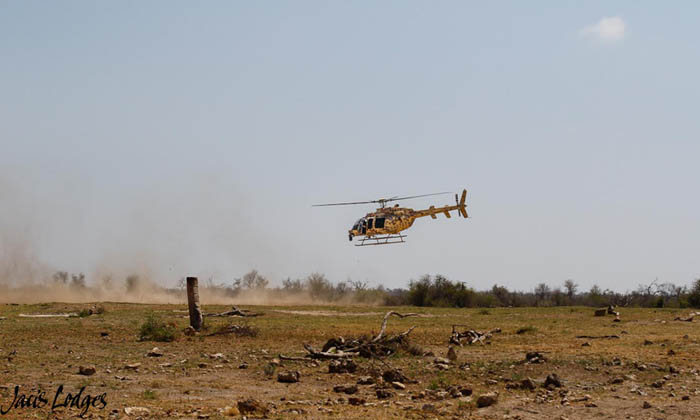 The next morning a helicopter arrived with the veterinarian, Gerhardus, landing not far from where we had left the rhinos the previous evening. The helicopter was sponsored by Rhino 911, a recently established non-profit organisation trying to make a difference in the fight against poaching. The helicopter had barely touched the ground before it was propelling towards the last known coordinates of the wounded individual.
The next morning a helicopter arrived with the veterinarian, Gerhardus, landing not far from where we had left the rhinos the previous evening. The helicopter was sponsored by Rhino 911, a recently established non-profit organisation trying to make a difference in the fight against poaching. The helicopter had barely touched the ground before it was propelling towards the last known coordinates of the wounded individual. The rhino went down moments after we had reached it. Its position was checked in order to ascertain that it could breathe freely. A towel was quickly thrown over its face so as to not stress it unnecessarily and water was poured over its body at regular intervals to keep it from over-heating. It was a relief to see that the bullet had missed anything vital on its way through the body, giving the rhino a fighting chance of survival. The wound was cleaned numerous times, fluids were pumped into the entry and exit holes and then squeezed out again in a stream of pus and antiseptic liquid, to prevent infection. When Gerhardus was satisfied with the cleaning of the wound, antibiotics were administered and the ears notched, to give this individual his “id-number”.
The rhino went down moments after we had reached it. Its position was checked in order to ascertain that it could breathe freely. A towel was quickly thrown over its face so as to not stress it unnecessarily and water was poured over its body at regular intervals to keep it from over-heating. It was a relief to see that the bullet had missed anything vital on its way through the body, giving the rhino a fighting chance of survival. The wound was cleaned numerous times, fluids were pumped into the entry and exit holes and then squeezed out again in a stream of pus and antiseptic liquid, to prevent infection. When Gerhardus was satisfied with the cleaning of the wound, antibiotics were administered and the ears notched, to give this individual his “id-number”.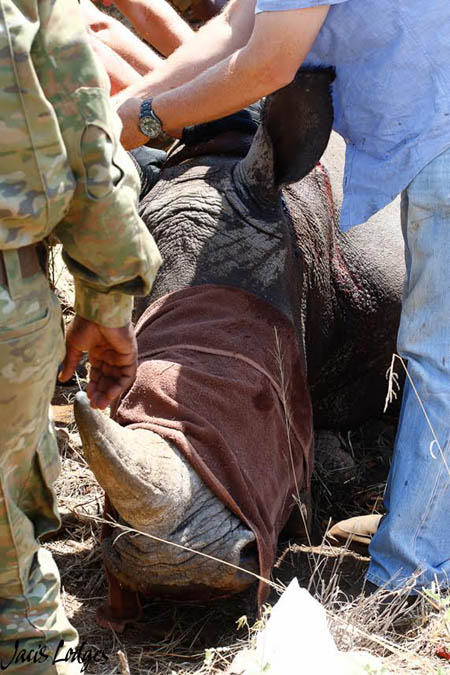 Being this close to a wild rhino and seeing it being helped back to health was an emotional experience that I will never forget. Hopefully, those of us who were there will be able to tell our future guests how we were there when this particular individual was saved and how it spurred us to greater involvement in conservation.
Being this close to a wild rhino and seeing it being helped back to health was an emotional experience that I will never forget. Hopefully, those of us who were there will be able to tell our future guests how we were there when this particular individual was saved and how it spurred us to greater involvement in conservation.








